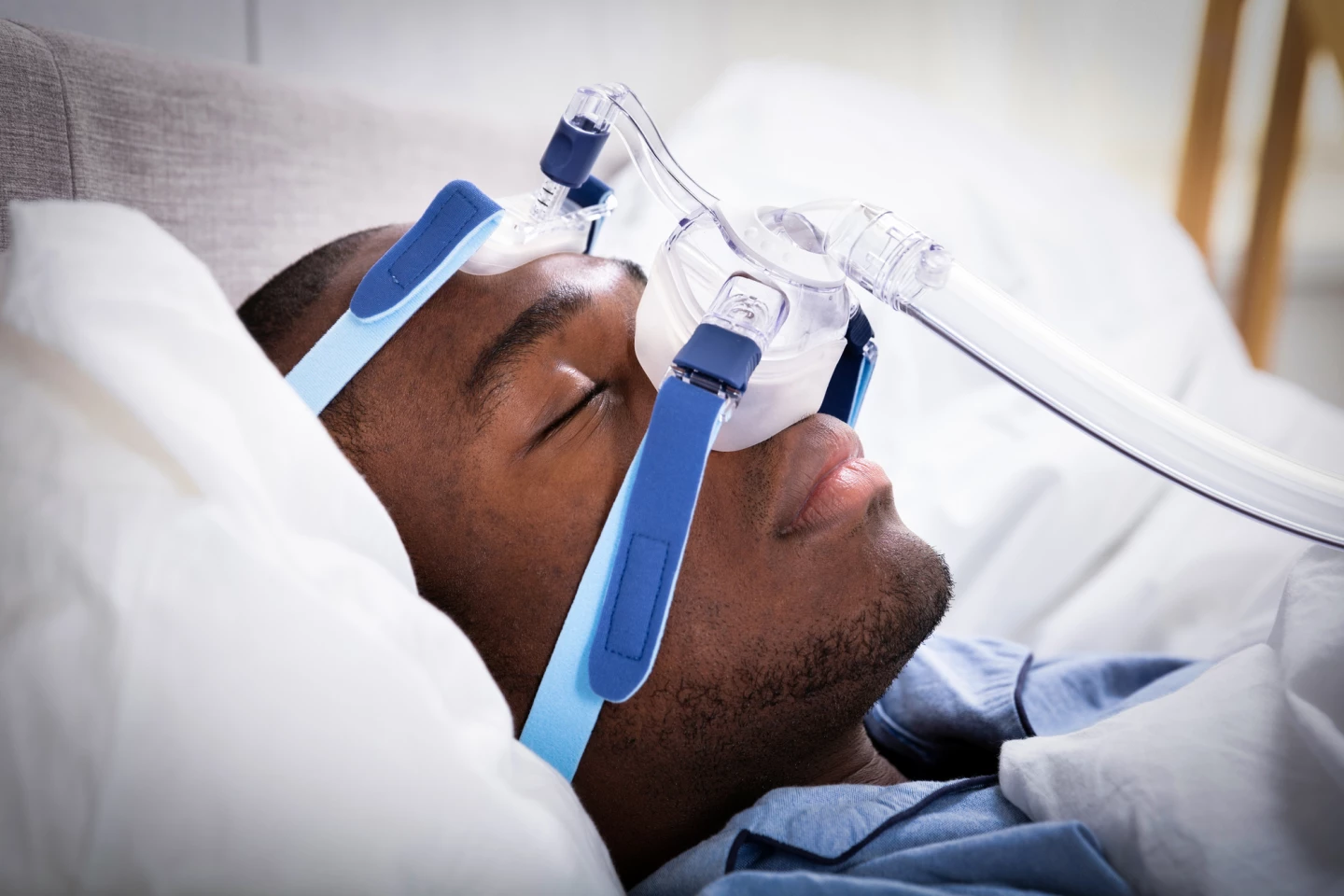Obstructive sleep apnea can cause or contribute to high blood pressure, so a new study examined which sleep apnea treatments – a CPAP machine or a mouthguard that keeps the airways open – was more effective at lowering blood pressure.
Medications are the first-line treatment for high blood pressure, otherwise known as hypertension. However, obstructive sleep apnea (OSA), which can cause and/or exacerbate hypertension, is being recognized as an underdiagnosed and modifiable risk factor. The most common sleep-rated breathing disorder, OSA is caused by the collapse of the upper airway during sleep, which leads to frequent sleep interruptions, up to 30 times an hour, all night long.
Continuous positive airway pressure (CPAP) delivered via a face or nasal mask is often used to treat OSA. An alternative treatment is a mandibular advancement device or MAD. Similar to a bite guard, a MAD holds the lower jaw (mandible) and tongue forward, keeping the airway open. There are pros and cons for both. CPAP, while effective, tends to be uncomfortable, so it’s poorly tolerated. MADs are less intrusive, but studies have shown they’re outperformed by CPAP when it comes to the apnea-hypopnea index (AHI), the number of times airflow fully (apnea) or partially (hypopnea) stops per hour during sleep.

Researchers from the National University of Singapore (NUS) and the University of Sydney conducted a randomized controlled trial to compare the effectiveness of MAD and CPAP in reducing hypertension in patients with moderate-to-severe OSA.
“Looking at the totality of evidence available in all the literature, it is still reasonable to say that CPAP is the first-line treatment until we have more data on the MAD,” said Ronald Lee Chi-Hang, professor of medicine at NUS’ Yong Loo Lin School of Medicine and corresponding author of the study. “However, for patients who cannot truly tolerate or accept using a CPAP, we should be more open-minded in looking for an alternative therapy such as a MAD, which, based on our study, numerically had a better blood pressure reduction in patients compared with a CPAP.”
Being a non-inferiority trial, the study tested whether a new treatment (MAD) is not worse than an established one (CPAP). The researchers recruited 220 participants with moderate-to-severe OSA and randomized them to either CPAP or MAD. Of the participants, 44.5% were overweight, and 49.5% were obese. The most prevalent high cardiovascular risk factors were coronary artery disease (60.9%) and diabetes (59.1%), with 44.1% of participants having had hypertension for more than 10 years.
At baseline and six-month follow-up, both groups underwent 24-hour ambulatory blood pressure (BP) monitoring, completed a questionnaire on sleepiness, and had blood tests for cardiovascular markers. Both devices tracked use. The primary outcome was the difference in 24-hour mean BP between baseline and follow-up.
MADs significantly reduced 24-hour mean BP from baseline to six-month follow-up, which was not significant in the CPAP group. The decrease in the MAD group was, on average, 1.64 mmHg larger than the CPAP group. Compared to the CPAP group, the MAD group also showed a larger between-group reduction in all ambulatory BP measures, especially nighttime BP, and more participants achieved a systolic BP (the top number) below 120 mmHg. None of the participants experienced symptomatic low BP or hypotension. From these data, the researchers ascertained that a MAD was non-inferior to CPAP.

The researchers also looked at differences in adherence between the two devices; that is, how long participants stuck with their allocated treatment. Over half (56.5%) assigned to the MAD used it for six or more hours each night on average over the study period, while 23.2% of CPAP users did the same.
“The MAD patients simply used the device longer,” Chi-Hang said. “That also might explain why the blood pressure reduction at nighttime, when the patients are actually using it, had a better reduction in the MAD arm.”
Adherence to the American Academy of Sleep Medicine’s (AASM) recommendation of four or more hours of use in at least 70% of nights overall was similar between groups, with 69.4% of the MAD group and 64.3% of the CPAP group meeting this recommendation. Both groups had reduced daytime sleepiness, and there were no between-group differences in cardiovascular biomarkers.
“People should be aware that over 400 million people globally have moderate-to-severe obstructive sleep apnea, and it is underdiagnosed and may be a contributing factor to their high blood pressure,” said Chi-Hang. “Especially for patients whose blood pressure is hard to control or who have a lot of excessive daytime sleepiness, go see a physician about sleep apnea and get treated if necessary.”
The study participants were of East Asian descent, and 85.5% were male. Although ethnic Chinese make up about 17.3% of the world’s population, further research on more diverse populations is needed to determine whether the results are generalizable. Further, the researchers note that adherence may have been higher because the study was conducted during COVID-19 travel lockdowns.
Further studies are planned to examine the impacts of the devices on cognition.
The study, funded by the Singapore Ministry of Health, was published in the Journal of the American College of Cardiology.







